Blog
The Basics of Home Theater Part 2
How to Upgrade to a 5.1 Home Theater System
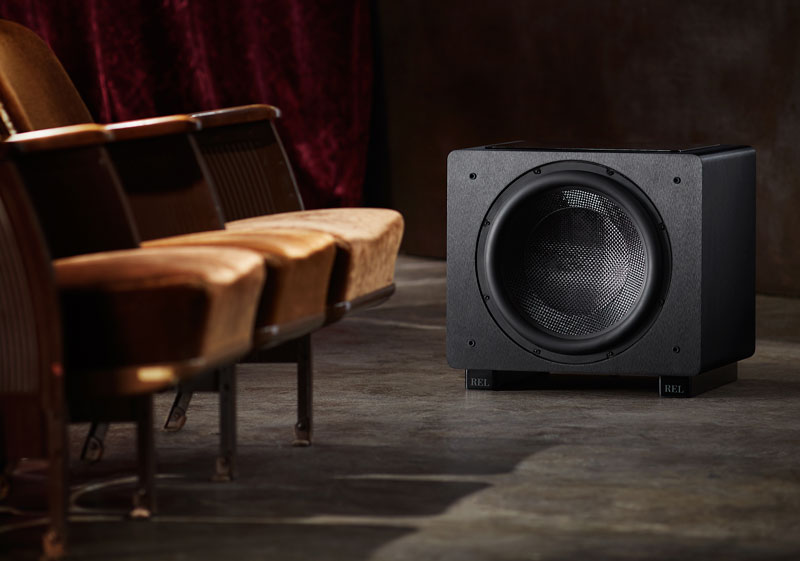
If you haven’t read our part 1 piece on this subject, which ends at the transition to a 3.1 system, we suggest you start with that article, because we’re about to jump into the most common multi-channel home theatre system, the 5.1 system. This pre-supposes you own a multichannel AVR (Audio Video Receiver) of at least 5.1 although you may have purchased a 7.2 or even more complex/advanced variant, it’s extremely useful to review what each group of channels is responsible for. Were it up to me, I would offer 5.3 as a legitimate option, explained later.
“Stereo” Matters in Theatre? In ALL multichannel theatre systems, the size and scope of the entire theatre is defined by the quality and scale of components that define your Left and Right main speakers. Think of the Left/Right main channels as the pillars that the rest of your theatre builds upon. If these are anemic or poorly setup, expect the rest of your theatre to be hobbled by this performance.
This is why in Part 1, I emphasized spending more on these and proportionally less on the electronics. Especially since the front ends of many models of AVRs from the same maker are virtually identical. And also, because the power supplies of these multi-channel wonders are for the most part necessarily mediocre (hey, you try putting 7 channels plus all the digital processing, Facebook, Netflix and wireless capabilities into one chassis and selling it for less than $1,000/£. Good luck).
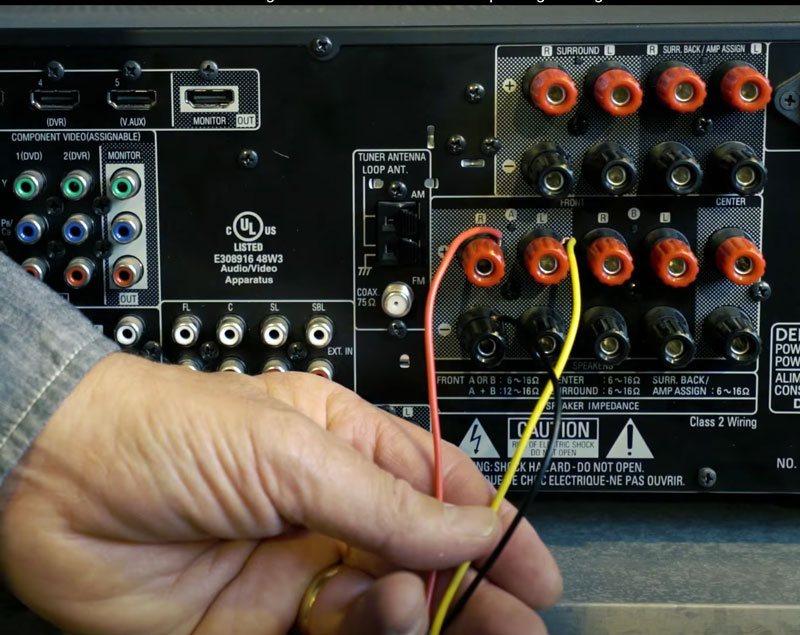
So, Left/Right mains define the scale and drama a theatre will reproduce and the main subwoofer is a subset of these two speakers and the electronics that drive them. This is especially true for REL in that we specialize in a type of connection called High Level, wherein a completely self-sufficient subwoofer with its own powerful amplifier within is connected up to those same terminals on the rear of the AVR that the L/R main speakers are PLUS the .1/LFE channel needed for special effects bass in theatre. The only thing a bit different that’s required is 30 seconds with your AVR’s remote control to set these 2 speakers to Large (Full Range). After that, it’s simply a matter of plugging in the old standby, the RCA-RCA interconnect to your .1output on your AVR and into the REL’s .1/LFE input on its rear panel and turning it up to stun.
Pro-Tip: Set these manually to Full Range and 0 feet on the Distance portion of the SetUp Menu (unless like the Denons and Marantzes they come preset to 12 feet in which case leave them alone at this setting). By setting them to 0 feet (millisconds of delay) you will get the widest dynamics possible from your system.
REL Tip: For a REL 3-D system, one that places you in the center of the hologram, set everything as described and use the smallest REL in the system here.
Front and Center
The Center Channel is of critical importance as most of the dialogue as well as the ability for directionally significant special effects to remain constant and trackable. So a jet flashing across the screen from right to left will be one continuous roaring Whooosh from right to left, without a break or reduction in output as it passes through the center portion of your screen. Most common mistakes we see (hear) are:
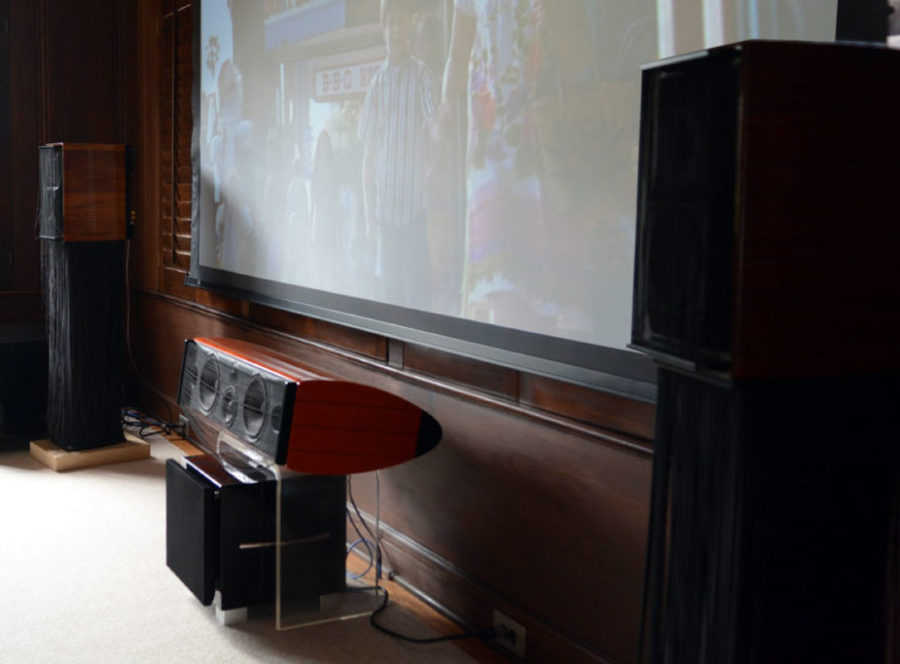
A. Our old friend the speaker set to Small. Setting this to large can make a huge improvement.
B. Setting this channel’s level too high and not using any delay. Use the pink noise (sounds like loud static) to set levels and bounce back and forth a few times between Left main and Center Channel to get the level identical and no louder. Getting the level perfect means that you are able to hear the center channel information presented in context—all the spatial setting is carried by the Left and Right main speakers. When the balance is perfect, all the dialogue and other center channel information sinks into this backdrop naturally. When cc level is right, you can still understand everything, but it is surrounded by acoustic cues appropriate to the image seen on screen.
Then set your delay as a starting point to 3 feet (if Denon/Marantz 15 feet). This will set the center channel properly back within the stage as though it were (correctly) on an equal distance arc, placing details in the correct perspective within the larger stage defined by the L-R Mains. If voices sound too staccato, add an additional foot. If too soft, yet the volume is just right, then remove a foot (to 2-feet) in your distance setting to gain crispness. Want an amazing improvement in this channel? Here’s our a unique Rel solution:
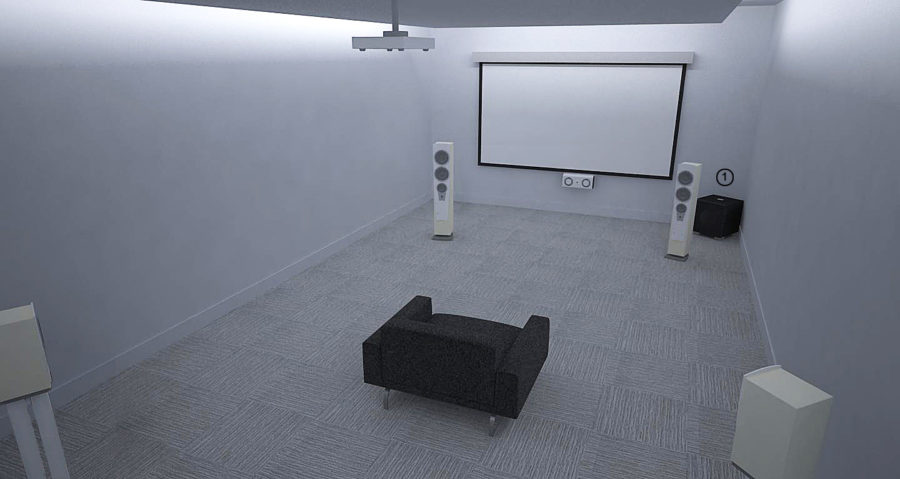
REL Tip: For a REL 3-D system, one that places you in the center of the hologram, set everything as described and use the smallest REL in the system here. For example, a main sub using an S/812 may only need a T/7i for the Center Channel sub. This REL should be connected High Level only and you may connect directly to the rear of the center channel speaker to save time and create a cleaner install.
Surrounded by Space
Actually, immersed in space is more like it, for a perfectly dialed-in system. The rear surrounds are responsible for adding in the ambience information needed to convince the ear that you, the movie goer, are placed within a 3-Dimensional hologram. Too often these are set too low to produce the desired effect and the Distance Settings are set too short to reliably add the dimensionality that great theatre is intended to recreate.
Myths include “Your Surrounds don’t need to be as good.” By this, they mean the surrounds don’t need to be as full range, especially in the bass region. Actually, since space is carried by deep bass (think of the echo walking into a cave) to convey the sense of vastness needed to convincingly carry this quality we like to see speakers at least as good as decent 6 1’2” (170mm) 2-way bookshelf speakers. They can also be high quality in-ceiling or in-wall speakers placed reasonably high on the rear walls facing forward.
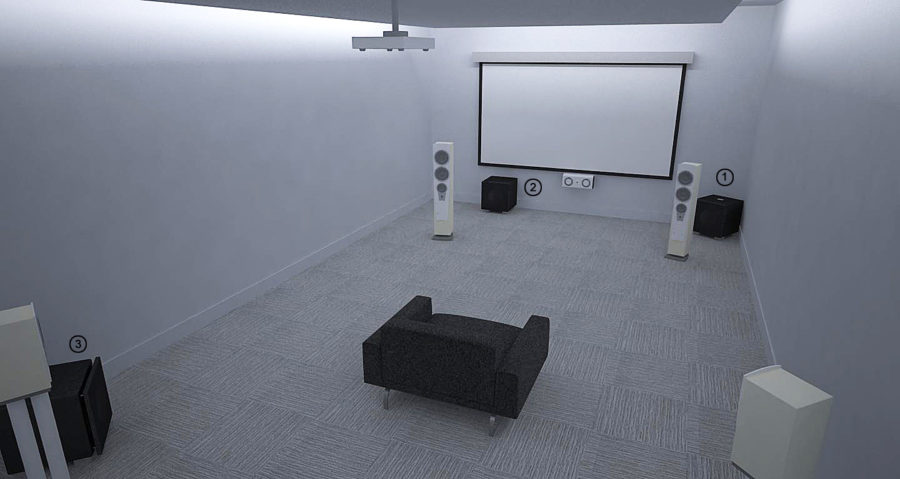
Pro Tip: Again, set them to Large. Do the Level Set Pink Noise drill again ensuring they are the same levels as your front three channels. Set initial distance to 12 feet and adjust as follows: for a smaller sounding space, reduce this number by a couple clicks, for a larger more spacious effect increase it by a few feet and fine tune as needed.
REL Tip: For a REL 3-D system, one that places you in the center of the hologram, set everything as described and use the second largest REL sub in your system for the rears. Whereas the Center Channel used the smallest, these channels benefit from the second largest. What? You thought reproducing the vastness of deep space was easy?
Hopefully, you have learned something about how Home Theatre actually works, what each section of a theatre repaly system is supposed to contribute and how to get the best from it. Our purpose here is to empower those interested in getting great home theatre results from their systems. And a huge part of that is by NOT resorting to using room correction. In close to 30 years of dialing in home theatres, not once have I heard a room-corrected system deliver magic. Yet by following the guidelines I’ve outlined here normal folks with a bit of patience now have a road map, a basic guide to the universe that will allow them to get more and better from their systems and enjoy the movie experience that much more.
Click here to read the first piece in this series, Home Theater Basics Pt. 1
We’re here to help you get much more out of your favorite movies at home, so don’t hesitate to reach out and visit our other home theater resources.
Getting the Most out of Your HT: Tips from the World’s Pickiest Setup Artists
How To Tune A Subwoofer: Learn How To Optimize Your REL The Same Way The Pros Do It.
Be A Theater Pro: 5 Tips To Build Theater Sound The Way the Pro’s Do
Home Theater Subwoofer Placement Guide










